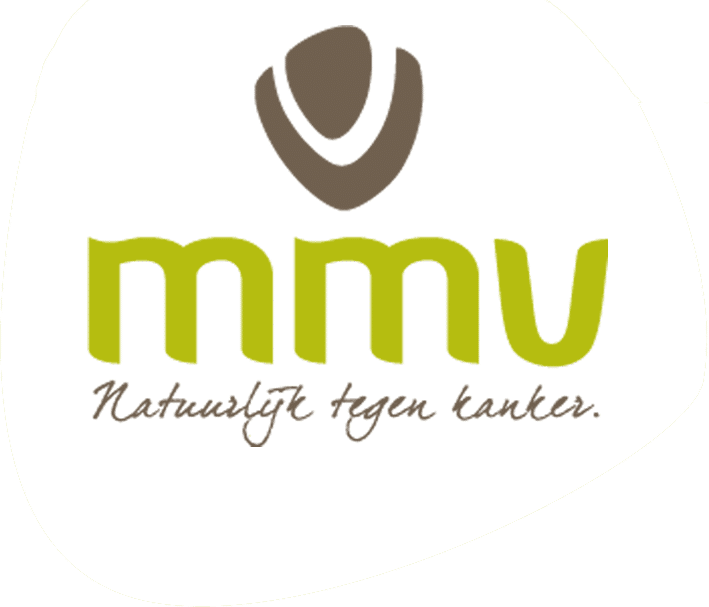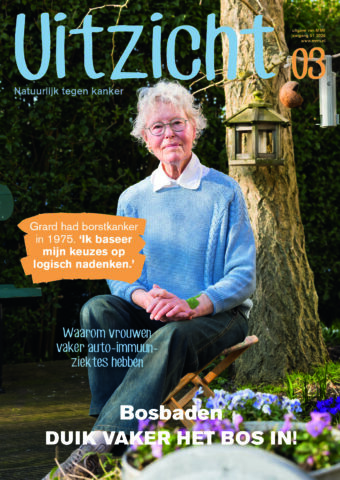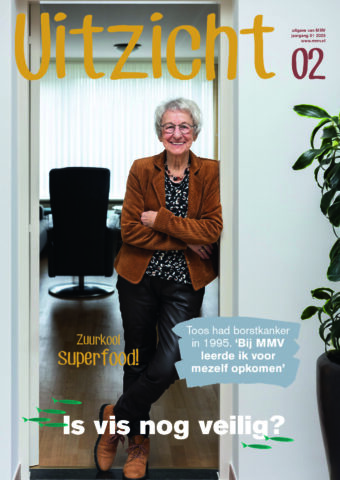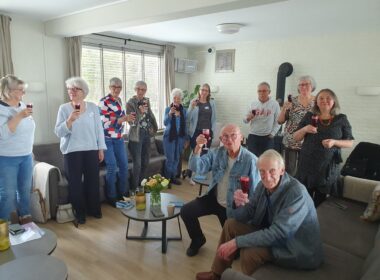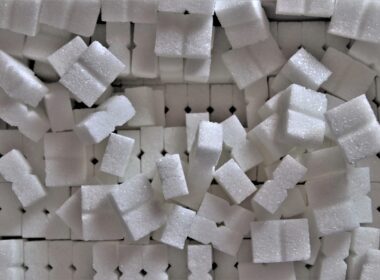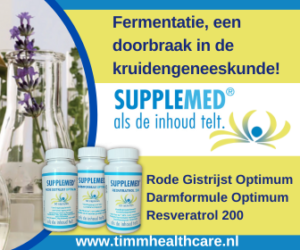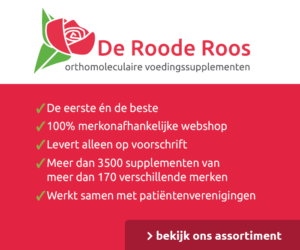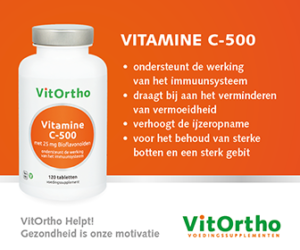Statines doen het LDL-cholesterol (LDLC) dalen. Maar visolie, kaneel, knoflook, kurkuma, plantensterolen en rode gistrijst doen dat niet. Sterker nog: knoflook doet het LDLC licht stijgen! Een nieuwe ‘wetenschappelijk-verantwoorde’ poging om supplementen af te serveren?
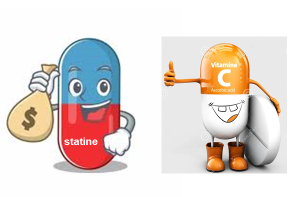
Bovenstaande bevindingen over statines versus supplementen komen voort uit een door de fabrikant betaalde studie met Rosuvastatine (5 mg) die ruim door de media (1-5) is opgepikt. De 190 proefpersonen hadden geen hart en vaatziekten maar wel een verhoogd risico hierop (5). Statines zijn remmers van de cholesterolaanmaak. Ze laten het LDLC dalen en het hart-vaatziekterisico verminderen (6-10). Ruim 2 miljoen Nederlanders (14 procent van de volwassenen!) slikken ze (10a).
‘Het publiek zou van mening zijn dat de onderzochte supplementen het LDLC laten dalen en het hart-vaatziekterisico verminderen’ (1,5). Het klinkt nobel, maar de onderzoekers zetten argeloze medewetenschappers, consumenten en journalisten moedwillig op het verkeerde been. Ten eerste was al lang bekend dat de onderzochte voedingssupplementen het LDLC niet doen dalen. De uitkomst stond dus tevoren vast. Ten tweede wordt ten onrechte de suggestie gewekt dat de supplementen daardoor geen bijdrage leveren aan een goede conditie van hart en vaten. Het LDLC daalde immers niet, dus ‘die dure supplementen kunnen we ons besparen’ (1,5). Sterker nog: visolie doet het LDLC eerder stijgen dan dalen (11-14). Jammer voor de onderzoekers dat die stijging er bij hen niet uit kwam: dat had hun verhaal nog spannender gemaakt.
Dat knoflook en visolie het LDL-gehalte niet doen dalen, was al lang bekend
Supplementen werken anders. Visolie stopt op actieve wijze een ontstekingsproces (14-17) en laat het vetgehalte in het bloed (de triglyceriden) dalen (11-14). Dat atherosclerose (‘aderverkalking’) door een ontstekingsproces ontstaat, weten we al sinds 1859. Het is stevig vastgelegd in een legendarisch artikel uit 1999 (18). Tenminste één van de medeauteurs van de huidige studie was daarvan op de hoogte. In het verleden liet hij nota bene zelf zien dat door onderdrukking van ontsteking het hart-vaatziekterisico daalt (26-30). De andere onderzochte supplementen komen uit planten en schimmels en vier ervan danken hun werking aan de ‘nrf2 agonisten’ die ze bevatten. Die veroorzaken een lichte oxidatieve stress, waardoor het lichaam zich beter beschermt (19-25b).
LDLC is geen ‘synoniem voor een hartinfarct’. En een daling van LDLC leidt niet automatisch tot een verminderd hart-vaatziekterisico (14,31). Ook al wordt dat door autoriteiten, zoals de Amerikaanse (32) en Nederlandse (33) hartstichtingen en ook de Nederlandse Gezondheidsraad (34,35), nog steeds met droge ogen beweerd (14,31). Sommige geneesmiddelen, waaronder plaspillen (40,41) en de SGLT2-remmers tegen diabetes type 2 en hartfalen (36-39), doen het LDLC stijgen, maar het hart-vaatziekterisico dalen. Postmenopauzale hormoonvervanging doet het LDLC dalen maar het hart-vaatziekterisico (vooral beroerte) stijgt (42-43d).
Door hun suggestieve conclusies brengen de auteurs van deze studie de geloofwaardigheid van de medische wetenschap in diskrediet. Niet-ingewijde medewetenschappers worden bedot en de media doen de rest. Supplementen zijn, in tegenstelling tot geneesmiddelen, niet te patenteren en worden daarom nauwelijks onderzocht. De Europese Unie stelde onlangs dat de hoeveelheid lovostatine in supplementen met rode gistrijst minder dan 3 mg moet zijn. Lovostatine is de natuurlijke statine, waarvan alle synthetische (gepatenteerde) statines zijn afgeleid. Bij patiënten met een verhoogd LDLC verlaagt 10 mg lovostatine het LDLC met 1 mmol/L (44,45). De reden van de EU-verordening ligt vooral in de spierklachten die statines als bijwerking hebben (46-48). Spierpijn en -kramp tot zeldzamere spierafbraak en spierscheuring zijn gerapporteerd (49,50). Het zou de fabrikant gesierd hebben als het onderzoek daarop was gericht.
NB. Dr. Muskiet heeft geen belangen, noch in geneesmiddelen, noch in supplementen.
1. Youtube fragment 7 november 2022. Speakers: Drs. C. Michael Gibson, Steve Nissen and Luke Laffin. JACC and AHA 2022 late-breaking science results from the SPORT trial comparing to rosuvastatin, placebo and six common dietary supplements in patients at risk of ASCVD. Comparative Effects of Low-Dose Rosuvastatin, Placebo and Dietary Supplements (JACC) | AHA 2022. Last accessed 20 November 2022
2. Berman R. Cholesterol: 6 heart health supplements may not be as effective as statins. Accessed 20 november 2022.
3. Aubrey A. Statins vs. supplements: New study finds one is ‘vastly superior’ to cut cholesterol. Shots – Health News _ NPR, posted 6 November. Accessed 20 november 2022.
4. Lou N. Study Refutes Heart Health Claims of Dietary Supplements — LDL cholesterol reductions with cinnamon, garlic, and others not on par with statin. Medpage Today, 6 November 2022, accessed 20 November 2022
https://www.medpagetoday.com/meetingcoverage/aha/101602
5. Laffin LJ, Bruemmer D, Garcia M, Brennan DM, McErlean E, Jacoby DS, Michos ED, Ridker PM, Wang TY, Watson KE, Hutchinson HG, Nissen SE. Comparative Effects of Low-Dose Rosuvastatin, Placebo and Dietary Supplements on Lipids and Inflammatory Biomarkers. J Am Coll Cardiol. 2022 Oct 19:S0735-1097(22)07125-X. doi: 10.1016/j.jacc.2022.10.013. Epub ahead of print. PMID: 36351465.
https://pubmed.ncbi.nlm.nih.gov/36351465/
6. O’Keefe JH, Carter MD, Lavie CJ. Primary and secondary prevention of cardiovascular diseases: a practical evidence-based approach. Mayo Clin Proc. 2009 Aug;84(8):741-57. doi: 10.1016/S0025-6196(11)60525-9. PMID: 19648392; PMCID: PMC2719528.
https://pubmed.ncbi.nlm.nih.gov/19648392/
7. Collins R, Reith C, Emberson J, Armitage J, Baigent C, Blackwell L, Blumenthal R, Danesh J, Smith GD, DeMets D, Evans S, Law M, MacMahon S, Martin S, Neal B, Poulter N, Preiss D, Ridker P, Roberts I, Rodgers A, Sandercock P, Schulz K, Sever P, Simes J, Smeeth L, Wald N, Yusuf S, Peto R. Interpretation of the evidence for the efficacy and safety of statin therapy. Lancet. 2016 Nov 19;388(10059):2532-2561. doi: 10.1016/S0140-6736(16)31357-5. Epub 2016 Sep 8. Erratum in: Lancet. 2017 Feb 11;389(10069):602. PMID: 27616593.
https://pubmed.ncbi.nlm.nih.gov/27616593/
8. Silverman MG, Ference BA, Im K, Wiviott SD, Giugliano RP, Grundy SM, Braunwald E, Sabatine MS. Association Between Lowering LDL-C and Cardiovascular Risk Reduction Among Different Therapeutic Interventions: A Systematic Review and Meta-analysis. JAMA. 2016 Sep 27;316(12):1289-97. doi: 10.1001/jama.2016.13985. PMID: 27673306.
https://pubmed.ncbi.nlm.nih.gov/27673306/
9. Cai T, Abel L, Langford O, Monaghan G, Aronson JK, Stevens RJ, Lay-Flurrie S, Koshiaris C, McManus RJ, Hobbs FDR, Sheppard JP. Associations between statins and adverse events in primary prevention of cardiovascular disease: systematic review with pairwise, network, and dose-response meta-analyses. BMJ. 2021 Jul 14;374:n1537. doi: 10.1136/bmj.n1537. PMID: 34261627; PMCID: PMC8279037.
https://pubmed.ncbi.nlm.nih.gov/34261627/
10. Byrne P, Demasi M, Jones M, Smith SM, O’Brien KK, DuBroff R. Evaluating the Association Between Low-Density Lipoprotein Cholesterol Reduction and Relative and Absolute Effects of Statin Treatment: A Systematic Review and Meta-analysis. JAMA Intern Med. 2022 May 1;182(5):474-481. doi: 10.1001/jamainternmed.2022.0134. Erratum in: JAMA Intern Med. 2022 May 1;182(5):579. PMID: 35285850; PMCID: PMC8922205.
https://pubmed.ncbi.nlm.nih.gov/35285850/
10a. Instituut Verantwoord Medicijngebruik. Het gebruik van cholesterolverlagers in zeven Europese landen. Januari 2022. Accessed 28 11 2022
https://www.medicijngebruik.nl/content/userfiles/files/rap_cholesterolverlagers_20220202_p.pdf
11. Balk EM, Lichtenstein AH, Chung M, Kupelnick B, Chew P, Lau J. Effects of omega-3 fatty acids on serum markers of cardiovascular disease risk: a systematic review. Atherosclerosis. 2006 Nov;189(1):19-30. doi: 10.1016/j.atherosclerosis.2006.02.012. Epub 2006 Mar 10. PMID: 16530201.
https://pubmed.ncbi.nlm.nih.gov/16530201/
12. Wei MY, Jacobson TA. Effects of eicosapentaenoic acid versus docosahexaenoic acid on serum lipids: a systematic review and meta-analysis. Curr Atheroscler Rep. 2011 Dec;13(6):474-83. doi: 10.1007/s11883-011-0210-3. Erratum in: Curr Atheroscler Rep. 2012 Feb;14(1):93. PMID: 21975919.
https://pubmed.ncbi.nlm.nih.gov/21975919/
13. Jacobson TA, Glickstein SB, Rowe JD, Soni PN. Effects of eicosapentaenoic acid and docosahexaenoic acid on low-density lipoprotein cholesterol and other lipids: a review. J Clin Lipidol. 2012 Jan-Feb;6(1):5-18. doi: 10.1016/j.jacl.2011.10.018. Epub 2011 Nov 3. PMID: 22264569.
https://pubmed.ncbi.nlm.nih.gov/22264569/
13a. Shearer GC, Savinova OV, Harris WS. Fish oil — how does it reduce plasma triglycerides? Biochim Biophys Acta. 2012 May;1821(5):843-51. doi: 10.1016/j.bbalip.2011.10.011. Epub 2011 Oct 25. PMID: 22041134; PMCID: PMC3563284.
https://pubmed.ncbi.nlm.nih.gov/22041134/
14. Muskiet FAJ. De LDL-cholesterol concentratie heeft zijn status als risicofactor verloren. Ned Tijdschr Klin Chem Labgeneesk 2016; 41: 253-265
https://www.nvkc.nl/sites/default/files/NTKC/N60_062175_NVKC_Oktober2016_WQ_2.pdf
15. Serhan CN, Chiang N, Van Dyke TE. Resolving inflammation: dual anti-inflammatory and pro-resolution lipid mediators. Nat Rev Immunol. 2008 May;8(5):349-61. doi: 10.1038/nri2294. PMID: 18437155; PMCID: PMC2744593.
https://pubmed.ncbi.nlm.nih.gov/18437155/
16. Serhan CN, Levy BD. Resolvins in inflammation: emergence of the pro-resolving superfamily of mediators. J Clin Invest. 2018 Jul 2;128(7):2657-2669. doi: 10.1172/JCI97943. Epub 2018 May 14. PMID: 29757195; PMCID: PMC6025982.
https://pubmed.ncbi.nlm.nih.gov/29757195/
17. Kavyani Z, Musazadeh V, Fathi S, Hossein Faghfouri A, Dehghan P, Sarmadi B. Efficacy of the omega-3 fatty acids supplementation on inflammatory biomarkers: An umbrella meta-analysis. Int Immunopharmacol. 2022 Oct;111:109104. doi: 10.1016/j.intimp.2022.109104. Epub 2022 Jul 30. PMID: 35914448.
https://pubmed.ncbi.nlm.nih.gov/35914448/
18. Ross R. Atherosclerosis–an inflammatory disease. N Engl J Med. 1999 Jan 14;340(2):115-26. doi: 10.1056/NEJM199901143400207. PMID: 9887164.
https://pubmed.ncbi.nlm.nih.gov/9887164/
19. Bryan HK, Olayanju A, Goldring CE, Park BK. The Nrf2 cell defence pathway: Keap1-dependent and -independent mechanisms of regulation. Biochem Pharmacol. 2013 Mar 15;85(6):705-17. doi: 10.1016/j.bcp.2012.11.016. Epub 2012 Dec 5. PMID: 23219527.
https://pubmed.ncbi.nlm.nih.gov/23219527/
20. Hayes JD, Dinkova-Kostova AT. The Nrf2 regulatory network provides an interface between redox and intermediary metabolism. Trends Biochem Sci. 2014 Apr;39(4):199-218. doi: 10.1016/j.tibs.2014.02.002. Epub 2014 Mar 16. PMID: 24647116.
https://pubmed.ncbi.nlm.nih.gov/24647116/
21. Kumar H, Kim IS, More SV, Kim BW, Choi DK. Natural product-derived pharmacological modulators of Nrf2/ARE pathway for chronic diseases. Nat Prod Rep. 2014 Jan;31(1):109-39. doi: 10.1039/c3np70065h. PMID: 24292194.
https://pubmed.ncbi.nlm.nih.gov/24292194/
22. Tebay LE, Robertson H, Durant ST, Vitale SR, Penning TM, Dinkova-Kostova AT, Hayes JD. Mechanisms of activation of the transcription factor Nrf2 by redox stressors, nutrient cues, and energy status and the pathways through which it attenuates degenerative disease. Free Radic Biol Med. 2015 Nov;88(Pt B):108-146. doi: 10.1016/j.freeradbiomed.2015.06.021. Epub 2015 Jun 27. PMID: 26122708; PMCID: PMC4659505.
https://pubmed.ncbi.nlm.nih.gov/26122708/
23. Mattson MP. WHAT DOESN”T KILL YOU… Sci Am. 2015 Jul;313(1):40-5. doi: 10.1038/scientificamerican0715-40. PMID: 26204714; PMCID: PMC5841445.
https://pubmed.ncbi.nlm.nih.gov/26204714/
24. Clifford T, Acton JP, Cocksedge SP, Davies KAB, Bailey SJ. The effect of dietary phytochemicals on nuclear factor erythroid 2-related factor 2 (Nrf2) activation: a systematic review of human intervention trials. Mol Biol Rep. 2021 Feb;48(2):1745-1761. doi: 10.1007/s11033-020-06041-x. Epub 2021 Jan 30. PMID: 33515348; PMCID: PMC7925463.
https://pubmed.ncbi.nlm.nih.gov/33515348/
25. Mansouri A, Reiner Ž, Ruscica M, Tedeschi-Reiner E, Radbakhsh S, Bagheri Ekta M, Sahebkar A. Antioxidant Effects of Statins by Modulating Nrf2 and Nrf2/HO-1 Signaling in Different Diseases. J Clin Med. 2022 Feb 27;11(5):1313. doi: 10.3390/jcm11051313. PMID: 35268403; PMCID: PMC8911353.
https://pubmed.ncbi.nlm.nih.gov/35268403/
25a. Li S, Guo W, Lau W, Zhang H, Zhan Z, Wang X, Wang H. The association of garlic intake and cardiovascular risk factors: A systematic review and meta-analysis. Crit Rev Food Sci Nutr. 2022 Mar 29:1-19. doi: 10.1080/10408398.2022.2053657. Epub ahead of print. PMID: 35348024.
https://pubmed.ncbi.nlm.nih.gov/35348024/
25b. Li M, Yun W, Wang G, Li A, Gao J, He Q. Roles and mechanisms of garlic and its extracts on atherosclerosis: A review. Front Pharmacol. 2022 Oct 3;13:954938. doi: 10.3389/fphar.2022.954938. PMID: 36263122; PMCID: PMC9574545.
https://pubmed.ncbi.nlm.nih.gov/36263122/
26. Ridker PM, Rifai N, Rose L, Buring JE, Cook NR. Comparison of C-reactive protein and low-density lipoprotein cholesterol levels in the prediction of first cardiovascular events. N Engl J Med. 2002 Nov 14;347(20):1557-65. doi: 10.1056/NEJMoa021993. PMID: 12432042.
https://pubmed.ncbi.nlm.nih.gov/12432042/
27. Verma S, Szmitko PE, Ridker PM. C-reactive protein comes of age. Nat Clin Pract Cardiovasc Med. 2005 Jan;2(1):29-36; quiz 58. doi: 10.1038/ncpcardio0074. PMID: 16265340.
https://pubmed.ncbi.nlm.nih.gov/16265340/
28. Ridker PM, Danielson E, Fonseca FA, Genest J, Gotto AM Jr, Kastelein JJ, Koenig W, Libby P, Lorenzatti AJ, MacFadyen JG, Nordestgaard BG, Shepherd J, Willerson JT, Glynn RJ; JUPITER Study Group. Rosuvastatin to prevent vascular events in men and women with elevated C-reactive protein. N Engl J Med. 2008 Nov 20;359(21):2195-207. doi: 10.1056/NEJMoa0807646. Epub 2008 Nov 9. PMID: 18997196.
https://pubmed.ncbi.nlm.nih.gov/18997196/
29. Ridker PM, Kastelein JJ, Genest J, Koenig W. C-reactive protein and cholesterol are equally strong predictors of cardiovascular risk and both are important for quality clinical care. Eur Heart J. 2013 May;34(17):1258-61. doi: 10.1093/eurheartj/eht022. Epub 2013 Feb 1. PMID: 23376447.
https://pubmed.ncbi.nlm.nih.gov/23376447/
30. Ridker PM, Everett BM, Thuren T, MacFadyen JG, Chang WH, Ballantyne C, Fonseca F, Nicolau J, Koenig W, Anker SD, Kastelein JJP, Cornel JH, Pais P, Pella D, Genest J, Cifkova R, Lorenzatti A, Forster T, Kobalava Z, Vida-Simiti L, Flather M, Shimokawa H, Ogawa H, Dellborg M, Rossi PRF, Troquay RPT, Libby P, Glynn RJ; CANTOS Trial Group. Antiinflammatory Therapy with Canakinumab for Atherosclerotic Disease. N Engl J Med. 2017 Sep 21;377(12):1119-1131. doi: 10.1056/NEJMoa1707914. Epub 2017 Aug 27. PMID: 28845751.
https://pubmed.ncbi.nlm.nih.gov/28845751/
31. Muskiet FAJ, Ruiz-Nunez, Dijck-Brouwer DAJ. Comment on the report ‘Dietary Fats and Cardiovascular Disease. A Presidential Advisory From the American Heart Association (AHA).’ Ned Tijdschr Klin Chem Labgeneesk 2017; 42: 224-228.
https://www.nvkc.nl/sites/default/files/NTKC/Comment%20on%20report.pdf
32. American Heart Association. HDL (Good), LDL (Bad) Cholesterol and Triglycerides. Accessed 20 November 2022.
https://www.heart.org/en/health-topics/cholesterol/hdl-good-ldl-bad-cholesterol-and-triglycerides
33. Nederlandse Hartstichting. Cholesterol. Accessed 20 November 2022
https://www.hartstichting.nl/oorzaken/cholesterol
34. Kromhout D, Spaaij CJ, de Goede J, Weggemans RM. The 2015 Dutch food-based dietary guidelines. Eur J Clin Nutr. 2016 Aug;70(8):869-78. doi: 10.1038/ejcn.2016.52. Epub 2016 Apr 6. PMID: 27049034; PMCID: PMC5399142.
https://www.ncbi.nlm.nih.gov/pmc/articles/PMC5399142/
35. Methodology for the evaluation of evidence No. 2021/41Ae, The Hague, November 16, 2021. Background document to: Dutch dietary guidelines for people with type 2 diabetes No. 2021/41e, The Hague, November 16, 2021
36. Katsiki N, Papanas N, Mikhailidis DP. Dapagliflozin: more than just another oral glucose-lowering agent? Expert Opin Investig Drugs. 2010 Dec;19(12):1581-9. doi: 10.1517/13543784.2011.539558. PMID: 21105857.
https://pubmed.ncbi.nlm.nih.gov/21105857/
37. Briand F, Mayoux E, Brousseau E, Burr N, Urbain I, Costard C, Mark M, Sulpice T. Empagliflozin, via Switching Metabolism Toward Lipid Utilization, Moderately Increases LDL Cholesterol Levels Through Reduced LDL Catabolism. Diabetes. 2016 Jul;65(7):2032-8. doi: 10.2337/db16-0049. Epub 2016 Apr 5. PMID: 27207551.
https://pubmed.ncbi.nlm.nih.gov/27207551/
38. Zaccardi F, Webb DR, Htike ZZ, Youssef D, Khunti K, Davies MJ. Efficacy and safety of sodium-glucose co-transporter-2 inhibitors in type 2 diabetes mellitus: systematic review and network meta-analysis. Diabetes Obes Metab. 2016 Aug;18(8):783-94. doi: 10.1111/dom.12670. Epub 2016 May 13. PMID: 27059700.
https://pubmed.ncbi.nlm.nih.gov/27059700/
39. Basu D, Huggins LA, Scerbo D, Obunike J, Mullick AE, Rothenberg PL, Di Prospero NA, Eckel RH, Goldberg IJ. Mechanism of Increased LDL (Low-Density Lipoprotein) and Decreased Triglycerides With SGLT2 (Sodium-Glucose Cotransporter 2) Inhibition. Arterioscler Thromb Vasc Biol. 2018 Sep;38(9):2207-2216. doi: 10.1161/ATVBAHA.118.311339. PMID: 30354257; PMCID: PMC6207215.
https://www.ncbi.nlm.nih.gov/pmc/articles/PMC6207215/
40. Herink, Megan, and Matthew K. Ito. “Medication induced changes in lipid and lipoproteins.” (2015). Book from MDText.com, Inc., South Dartmouth (MA), 13 Nov 2015 PMID: 26561699
https://www.ncbi.nlm.nih.gov/books/NBK326739/
41. Olde Engberink RH, Frenkel WJ, van den Bogaard B, Brewster LM, Vogt L, van den Born BJ. Effects of thiazide-type and thiazide-like diuretics on cardiovascular events and mortality: systematic review and meta-analysis. Hypertension. 2015 May;65(5):1033-40. doi: 10.1161/HYPERTENSIONAHA.114.05122. Epub 2015 Mar 2. PMID: 25733241.
https://pubmed.ncbi.nlm.nih.gov/25733241/
42. Kuller LH; Women’s Health Initiative. Hormone replacement therapy and risk of cardiovascular disease: implications of the results of the Women’s Health Initiative. Arterioscler Thromb Vasc Biol. 2003 Jan 1;23(1):11-6. doi: 10.1161/01.atv.0000046033.32478.6d. PMID: 12524219.
https://pubmed.ncbi.nlm.nih.gov/12524219/
43. Howard BV, Rossouw JE. Estrogens and cardiovascular disease risk revisited: the Women’s Health Initiative. Curr Opin Lipidol. 2013 Dec;24(6):493-9. doi: 10.1097/MOL.0000000000000022. PMID: 24184944; PMCID: PMC4219554.
https://pubmed.ncbi.nlm.nih.gov/24184944/
43a. Nie G, Yang X, Wang Y, Liang W, Li X, Luo Q, Yang H, Liu J, Wang J, Guo Q, Yu Q, Liang X. The Effects of Menopause Hormone Therapy on Lipid Profile in Postmenopausal Women: A Systematic Review and Meta-Analysis. Front Pharmacol. 2022 Apr 12;13:850815. doi: 10.3389/fphar.2022.850815. PMID: 35496275; PMCID: PMC9039020.
https://pubmed.ncbi.nlm.nih.gov/35496275/
43b. US Preventive Services Task Force, Mangione CM, Barry MJ, Nicholson WK, Cabana M, Caughey AB, Chelmow D, Coker TR, Davis EM, Donahue KE, Jaén CR, Kubik M, Li L, Ogedegbe G, Pbert L, Ruiz JM, Stevermer J, Wong JB. Hormone Therapy for the Primary Prevention of Chronic Conditions in Postmenopausal Persons: US Preventive Services Task Force Recommendation Statement. JAMA. 2022 Nov 1;328(17):1740-1746. doi: 10.1001/jama.2022.18625. PMID: 36318127.
https://pubmed.ncbi.nlm.nih.gov/36318127/
43c. Jin J. Menopausal Hormone Therapy for Prevention of Chronic Conditions. JAMA. 2022 Nov 1;328(17):1780. doi: 10.1001/jama.2022.19855. PMID: 36318132.
https://pubmed.ncbi.nlm.nih.gov/36318132/
43d. National Canker Institute. Menopausal Hormone Therapy and Cancer. Accessed 28 11 2022.
https://www.cancer.gov/about-cancer/causes-prevention/risk/hormones/mht-fact-sheet#r1
44. Gerards MC, Terlou RJ, Yu H, Koks CH, Gerdes VE. Traditional Chinese lipid-lowering agent red yeast rice Atherosclerosis. 2015 Jun;240(2):415-23. doi: 10.1016/j.atherosclerosis.2015.04.004. Epub 2015 Apr 12. results in significant LDL reduction but safety is uncertain – a systematic review and meta-analysis. PMID: 25897793.
https://pubmed.ncbi.nlm.nih.gov/25897793/
45. Minamizuka T, Koshizaka M, Shoji M, Yamaga M, Hayashi A, Ide K, Ide S, Kitamoto T, Sakamoto K, Hattori A, Ishikawa T, Kobayashi J, Maezawa Y, Kobayashi K, Takemoto M, Inagaki M, Endo A, Yokote K. Low dose red yeast rice with monacolin K lowers LDL cholesterol and blood pressure in Japanese with mild dyslipidemia: A multicenter, randomized trial. Asia Pac J Clin Nutr. 2021 Sep;30(3):424-435. doi: 10.6133/apjcn.202109_30(3).0009. PMID: 34587702.
https://pubmed.ncbi.nlm.nih.gov/34587702/
46. Younes M et al. Scientific opinion on the safety of monacolins in red yeast rice. EFSA Journal 2018;16(8):5368. doi: 10.2903/j.efsa.2018.5368. Published: 3 August 2018 Adopted: 25 June 2018; Accessed 20 November 2022
https://www.efsa.europa.eu/en/efsajournal/pub/5368
47. VERORDENING (EU) 2022/860 VAN DE COMMISSIE van 1 juni 2022 tot wijziging van bijlage III bij Verordening (EG) nr. 1925/2006 van het Europees Parlement en de Raad wat betreft monacolinen uit rodegistrijst
https://eur-lex.europa.eu/legal-content/NL/TXT/PDF/?uri=CELEX:32022R0860&from=EN
48. Maximum gesteld dagdosering monacolinen in rode gist rijst, 25 augustus 2022
49. Cholesterol Treatment Trialists’ Collaboration. Effect of statin therapy on muscle symptoms: an individual participant data meta-analysis of large-scale, randomised, double-blind trials. Lancet. 2022 Sep 10;400(10355):832-845. doi: 10.1016/S0140-6736(22)01545-8. Epub 2022 Aug 29. Erratum in: Lancet. 2022 Oct 8;400(10359):1194. PMID: 36049498; PMCID: PMC7613583.
https://pubmed.ncbi.nlm.nih.gov/36049498/
50. Gezondheidsnet. Spierpijn door statines? Dit kun je doen. Overleg altijd eerst met je huisarts, een artikel met medewerking van Bijwerkingencentrum Lareb, accessed 01 12 2022
https://www.gezondheidsnet.nl/cholesterol/spierpijn-door-statines-dit-kun-je-doen;
MMV maakt wekelijks een selectie uit het nieuws over voeding en leefstijl in relatie tot kanker en andere medische condities.
Inschrijven nieuwsbrief
